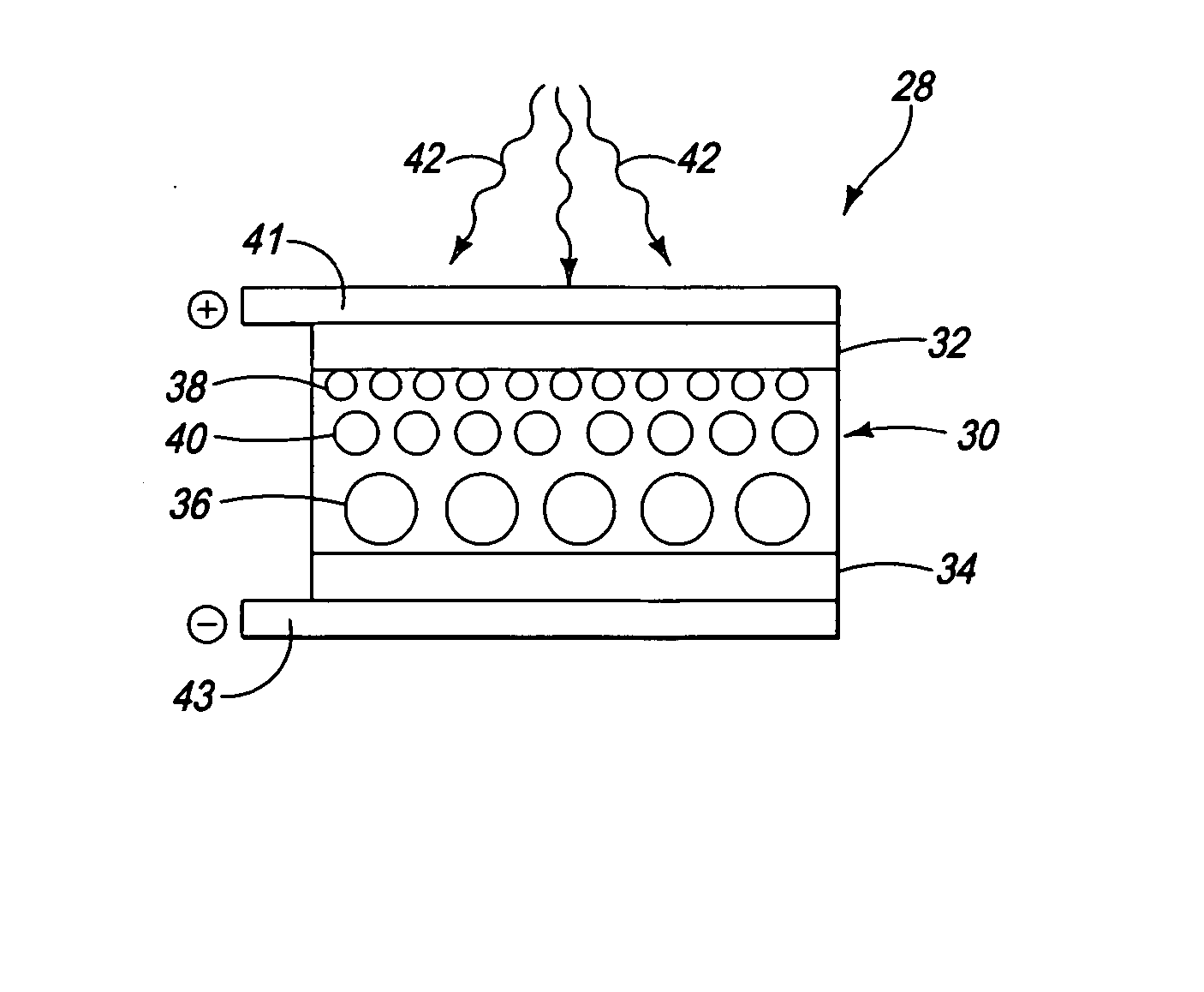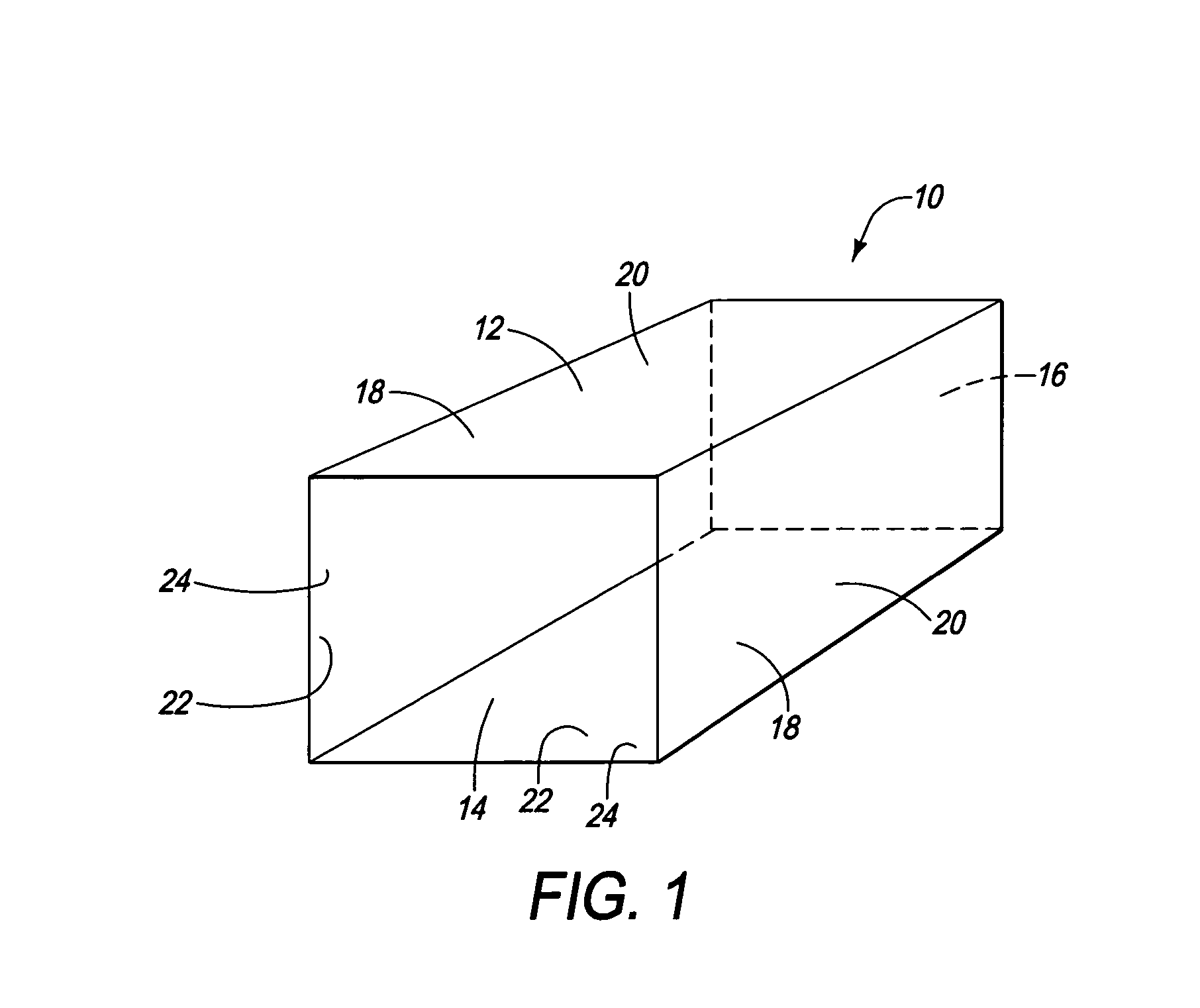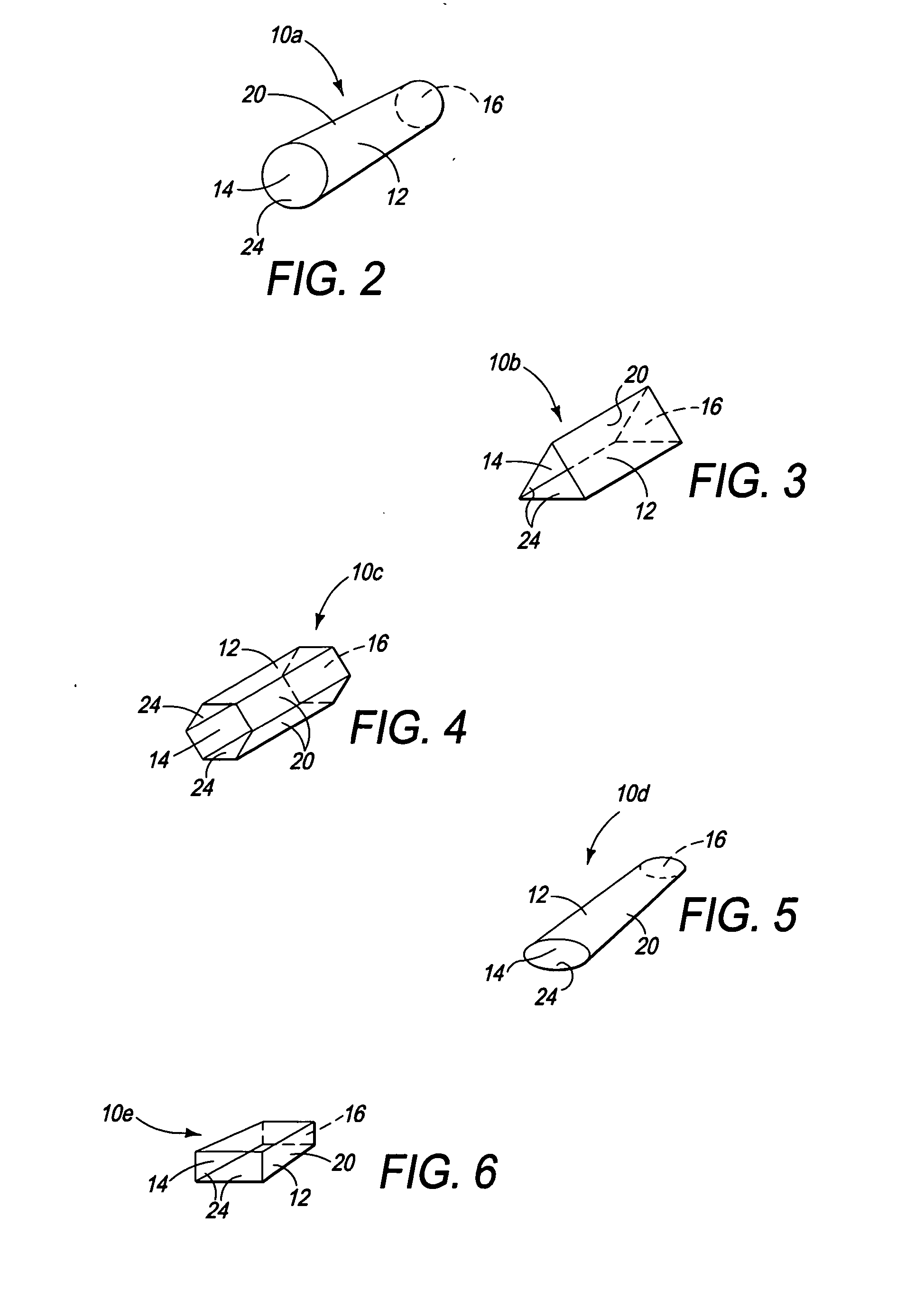Double-sided solar module
- Summary
- Abstract
- Description
- Claims
- Application Information
AI Technical Summary
Benefits of technology
Problems solved by technology
Method used
Image
Examples
Embodiment Construction
[0021] Turning now to FIG. 1, a solar module 10 in accordance with one embodiment of the present module includes a tubular body 12 and a pair of openings 14 and 16 at the opposite ends of the body. The two openings 14, 16 preferably have substantially the same dimensions, however variations are contemplated. An outside wall 18 of the body 12 is covered with a layer of thin film photovoltaic (TFPV) panel 20, which is oriented to have its light collecting surface facing out. Similarly, an inside wall 22 of the body 12 is also provided with a TFPV layer 24. The TFPV layers 20, 24 absorb visible, ultraviolet (UV) and infrared (IR) light from the sun or artificial light sources, and generates electric current.
[0022] Generally, the amount of electric current generated by the solar module 10 is dependent on the relationship between the lengths of the tubular body 12 and the width or area of the openings 14, 16. Deeper or longer length-to-opening ratios (e.g., 2 to 1) are less efficient pe...
PUM
 Login to View More
Login to View More Abstract
Description
Claims
Application Information
 Login to View More
Login to View More - R&D
- Intellectual Property
- Life Sciences
- Materials
- Tech Scout
- Unparalleled Data Quality
- Higher Quality Content
- 60% Fewer Hallucinations
Browse by: Latest US Patents, China's latest patents, Technical Efficacy Thesaurus, Application Domain, Technology Topic, Popular Technical Reports.
© 2025 PatSnap. All rights reserved.Legal|Privacy policy|Modern Slavery Act Transparency Statement|Sitemap|About US| Contact US: help@patsnap.com



